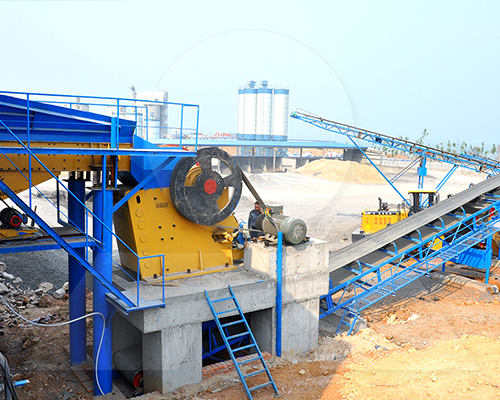Basic Troubleshooting of Jaw Crusher Issues
Jaw crushers are vital equipment used in mining, construction, and other industries for crushing large rocks into smaller, manageable sizes. However, like any heavy-duty machinery, jaw crushers are prone to wear and tear, which may lead to various operational issues. This article provides a basic overview of common jaw crusher problems and troubleshooting methods to ensure smooth and efficient operation.
1. Common Problems with Jaw Crushers
Jaw crushers may face several issues during operation, such as:
- Excessive Vibration: Vibration can be caused by imbalanced wear in parts, improper installation, or loose bearings. It is crucial to inspect the machine regularly for alignment and balance issues.
- Material Blockage: If the crusher becomes clogged with material, it can result in decreased output. Blockages may happen due to excessive feed size or sticky materials like clay.
- Abnormal Noise: Unusual noise from the jaw crusher could indicate loose or worn-out parts such as bearings, bolts, or other moving components.
- Wear of Jaw Plates: The jaw plates are subject to wear due to the constant crushing action. Over time, they may need to be replaced to ensure effective performance.
- Reduction in Output: When the crusher output decreases significantly, it could be due to various reasons like worn-out parts, improper settings, or blockages.
2. Basic Troubleshooting Techniques
To avoid downtime and ensure optimal performance, it is essential to troubleshoot and resolve issues promptly. Below are some basic troubleshooting techniques for common jaw crusher problems:
- Addressing Excessive Vibration: First, inspect the machine for loose bolts, worn bearings, or misaligned components. Tighten all loose parts and ensure the machine is installed on a stable foundation. Check for any imbalance in rotating parts and adjust as needed to minimize vibration.
- Clearing Material Blockages: If the jaw crusher is blocked, it is essential to stop the machine before attempting to clear the material. Inspect the feed size and ensure it matches the crusher’s capacity. Regularly clean out the chamber and avoid feeding sticky or damp materials without proper processing.
- Resolving Abnormal Noise: Noise can indicate internal damage. Start by checking for loose bolts, worn-out bearings, or faulty components. Replace any damaged parts immediately to prevent further complications. Additionally, lubricate moving parts to reduce friction and noise.
- Dealing with Jaw Plate Wear: Monitor the jaw plates regularly for wear and tear. Depending on the material being processed, jaw plates may need to be replaced periodically. Ensure that they are installed correctly and securely to avoid misalignment and inefficiency in crushing.
- Improving Output Efficiency: If there is a noticeable decrease in output, it may be time to check and adjust the discharge settings, replace worn parts, or inspect the feed materials for excessive moisture or size issues. Proper maintenance and timely part replacements can help restore performance levels.
3. Preventive Maintenance
Preventive maintenance is key to reducing jaw crusher failures. Regularly inspect the machine for signs of wear, monitor lubrication levels, and follow the manufacturer’s maintenance guidelines. Conduct routine checks on jaw plates, bearings, belts, and other critical components. Addressing small issues early on can help avoid costly breakdowns in the future.
Conclusion
Jaw crushers are essential for many industries, but they require proper care and maintenance to function efficiently. By understanding common problems such as excessive vibration, blockages, noise, and wear, operators can take the necessary steps to troubleshoot and resolve these issues. Implementing preventive maintenance strategies will also help minimize downtime and extend the lifespan of the crusher, ultimately improving productivity.
- > Durable PFW Series Impact Crusher: Optimizing Performance for Modern Crushing Needs
- > Cone Crusher for Kaolin Processing in Nigeria: Enhancing Efficiency and Productivity
- > VSI Vertical Shaft Impact Crusher for Particle Shape Optimization in Concrete Aggregates
- > Impact Crusher for Processing Dolomite and Tantalite in Mining Plants
- > Mobile Impact Crushers in Argentina: A Key Solution for Efficient Material Processing
- > Deep Cavity Jaw Crusher for Basalt Processing: High Efficiency and Durability
- > Impact Crusher for Granite Processing
- > Jaw Crushers for Bauxite Mines: Efficiency and Reliability in the Mining Industry
Hot Product


Online




Message

